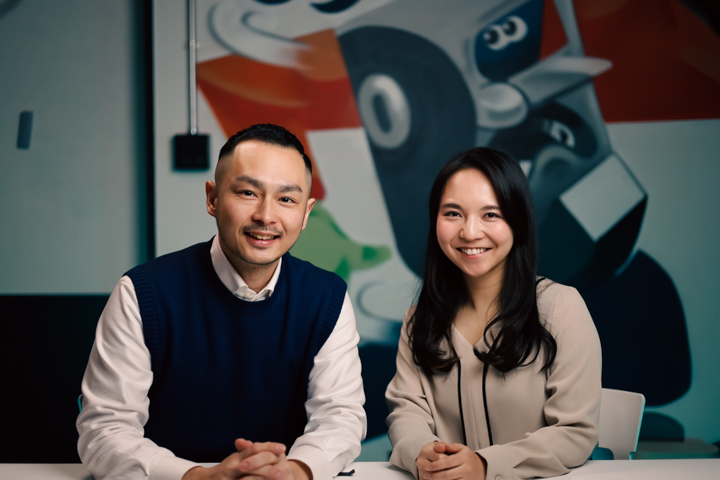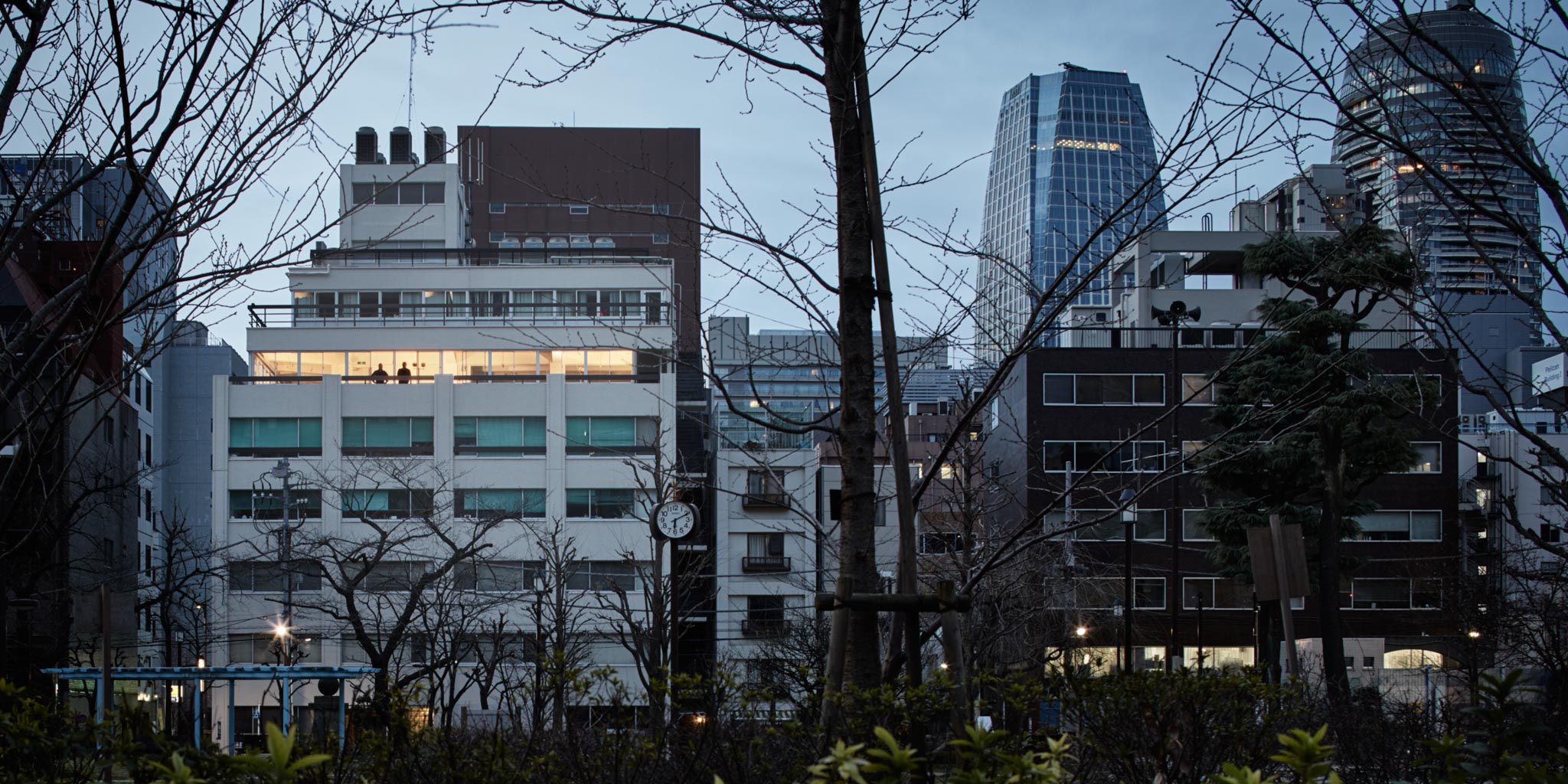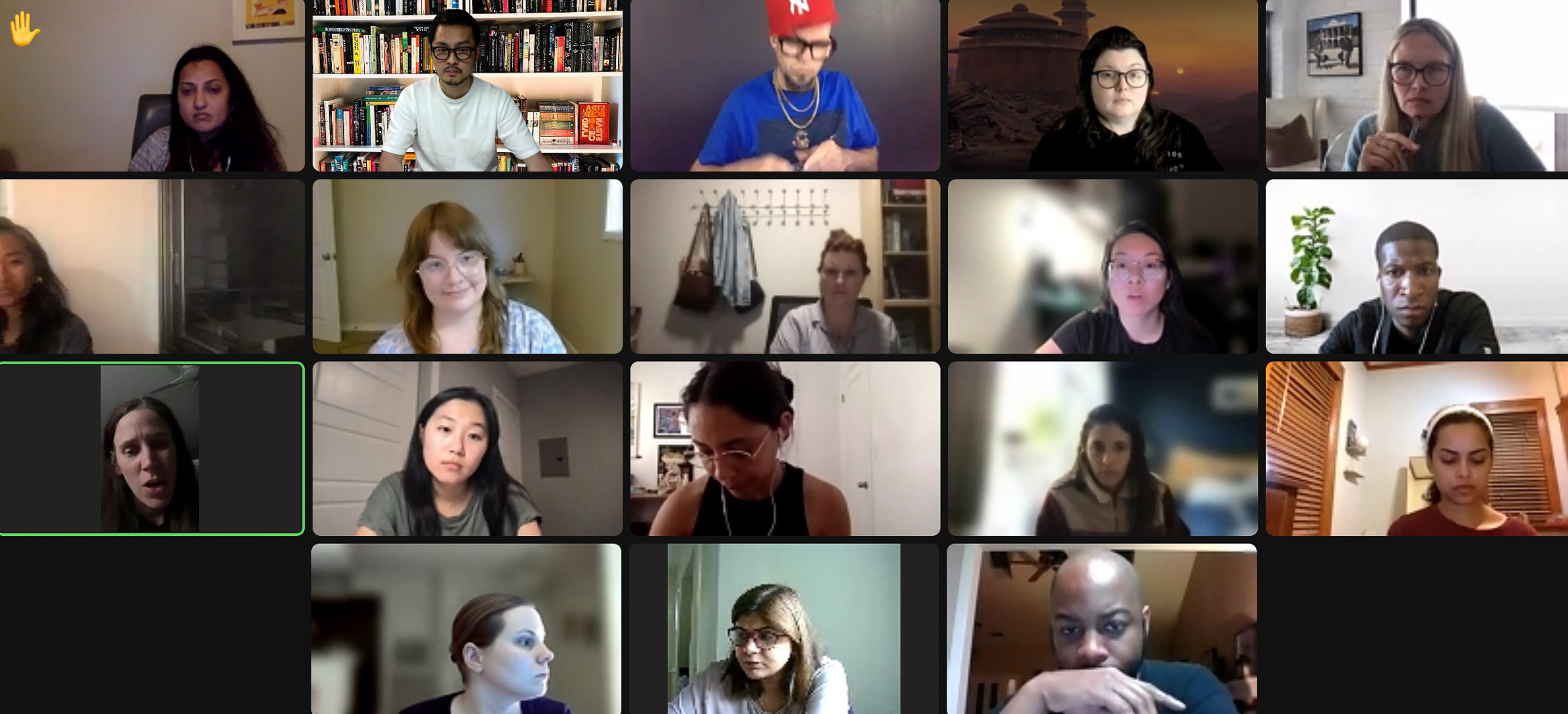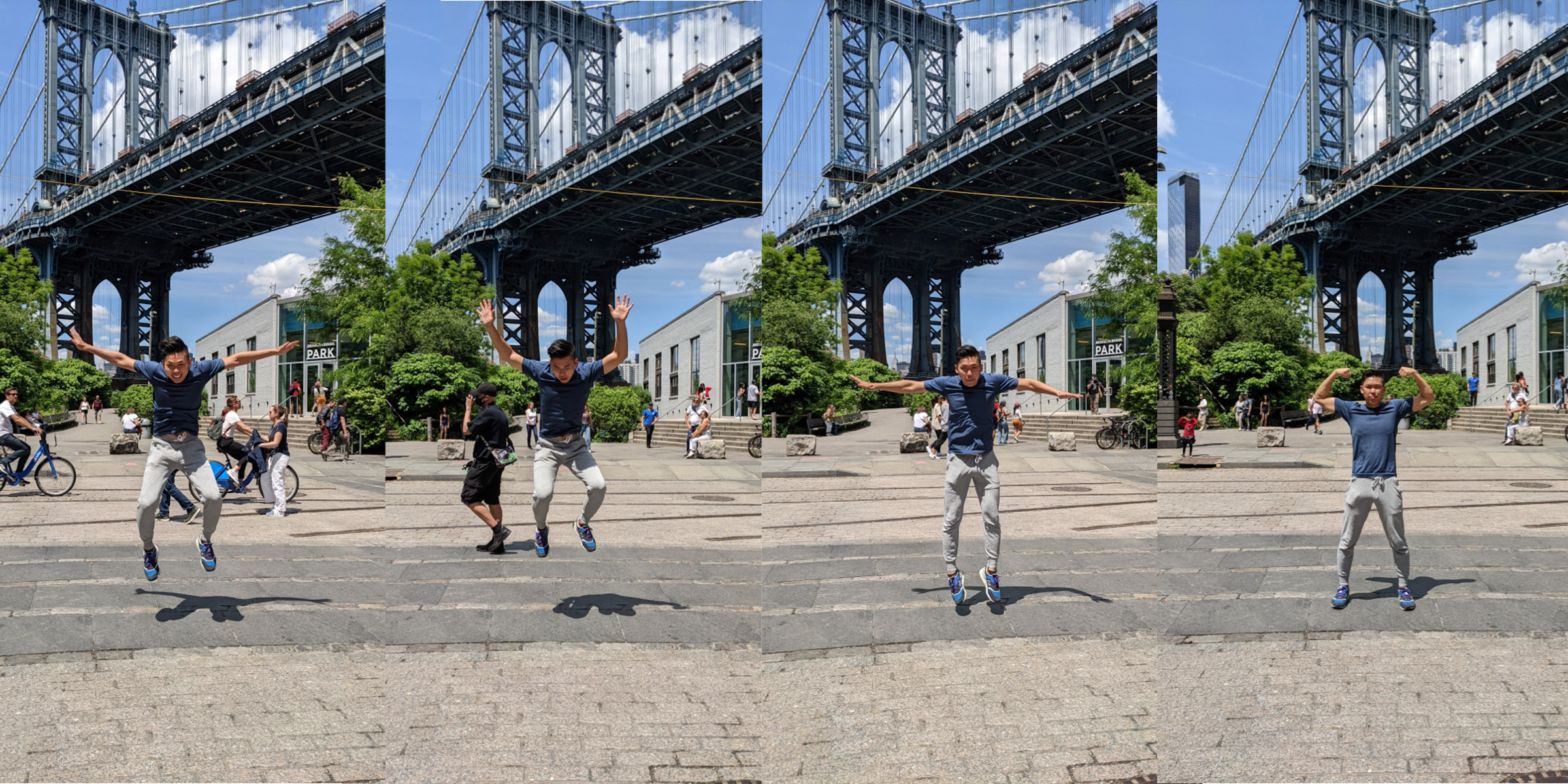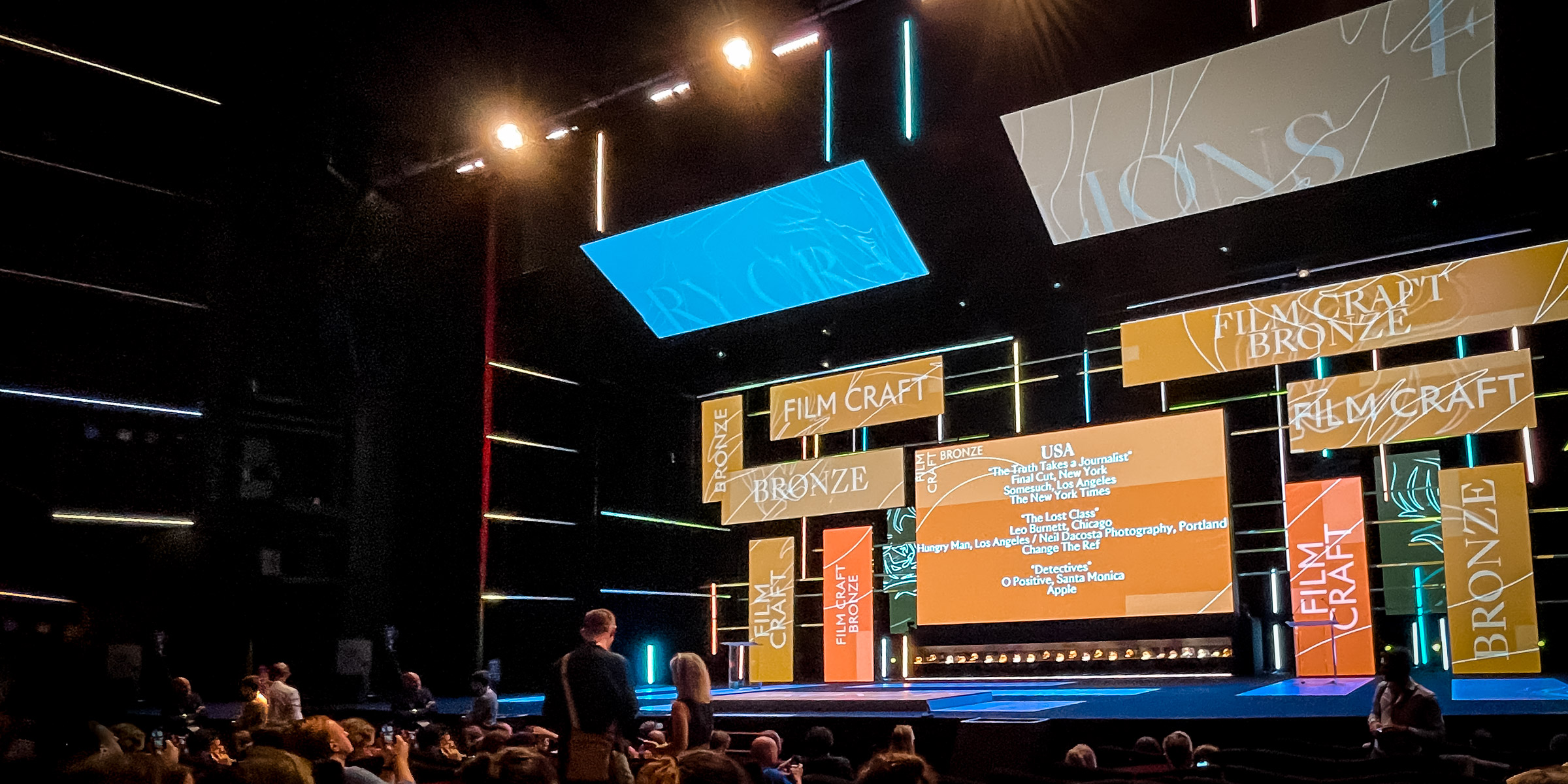In English, “off-site” means to be away from a particular place or site. In Europe and the U.S, when employees go somewhere together to participate in meetings and activities outside of the office (a.k.a on-site), it is called an off-site. This is an occasion that many companies choose to hold several times a year on a regular basis. By changing the environment, off-sites allow employees to focus more deeply on discussions, talk with people they have never talked to before, and create new stimulation that only an unusual space can provide
In this issue, we speak to Rina Shin, who was on temporary assignment to Anchorstar from Mori Building from 2018 to 2021. As an assignee, Rina had a number of off-site assignments experiences at Anchorstar. In January 2022, six months after returning to Mori Building, she organized and conducted her first off-site in her own department.
–When did you participate in your first off-site meeting?
It was soon after I was temporarily assigned to Anchorstar. I had never seen or heard of an off-site before, so when it was first explained to me that we would be doing team activities in a different environment, I thought, “Is this a company trip?”
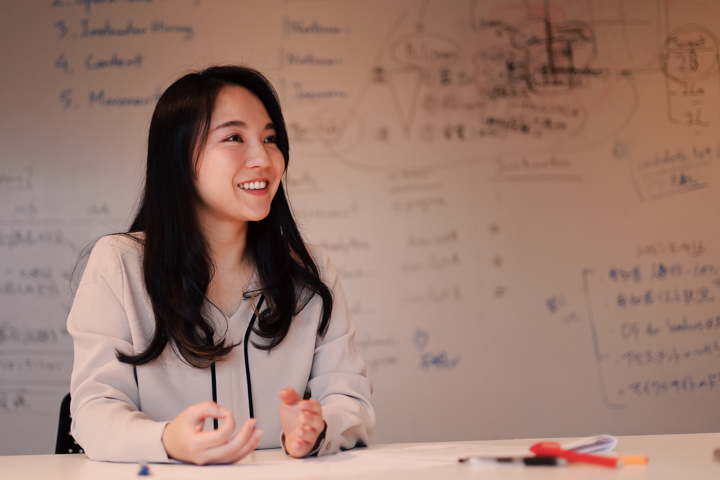
Our very first off-site event was the Tokyo Olympics. We rented out an entire hotel and all the employees stayed overnight. The hotel was the venue for a surfing competition near the sea in Ichinomiya, Chiba Prefecture. I had anticipated something closer to a casual, work trip, so I remember being surprised at how effectively our time was managed from start to end.
–What kind of projects took place at that first off-site?
One of the projects I participated in was called “Serious BBQ.”
We were all split into predetermined teams of two and our task was to recreate a recipe as authentically as we could. For example, an Indian curry made from scratch using authentic spices or a seafood paella made in a traditional paella pan.
I was paired with Taro (Anchorstar CEO, Taro Kodama), and we were tasked with making Indian curry, which led to a lot of interesting conversations. Later, I found out that the off-site planners had arranged for the two of us to be a team because I had just been transferred and was still a bit uncomfortable talking to Taro-san. Up until that point, we had only had work-related conversations, so it was a great opportunity for us to get to know each other.
Another project I took part in asked us to create posters that advertised the hotels we stayed at! The challenge was to include “everything you could possibly experience at this accommodation” in a single photograph. Each person’s role was determined in advance, with acting guidance, we took our time to take a single photograph.
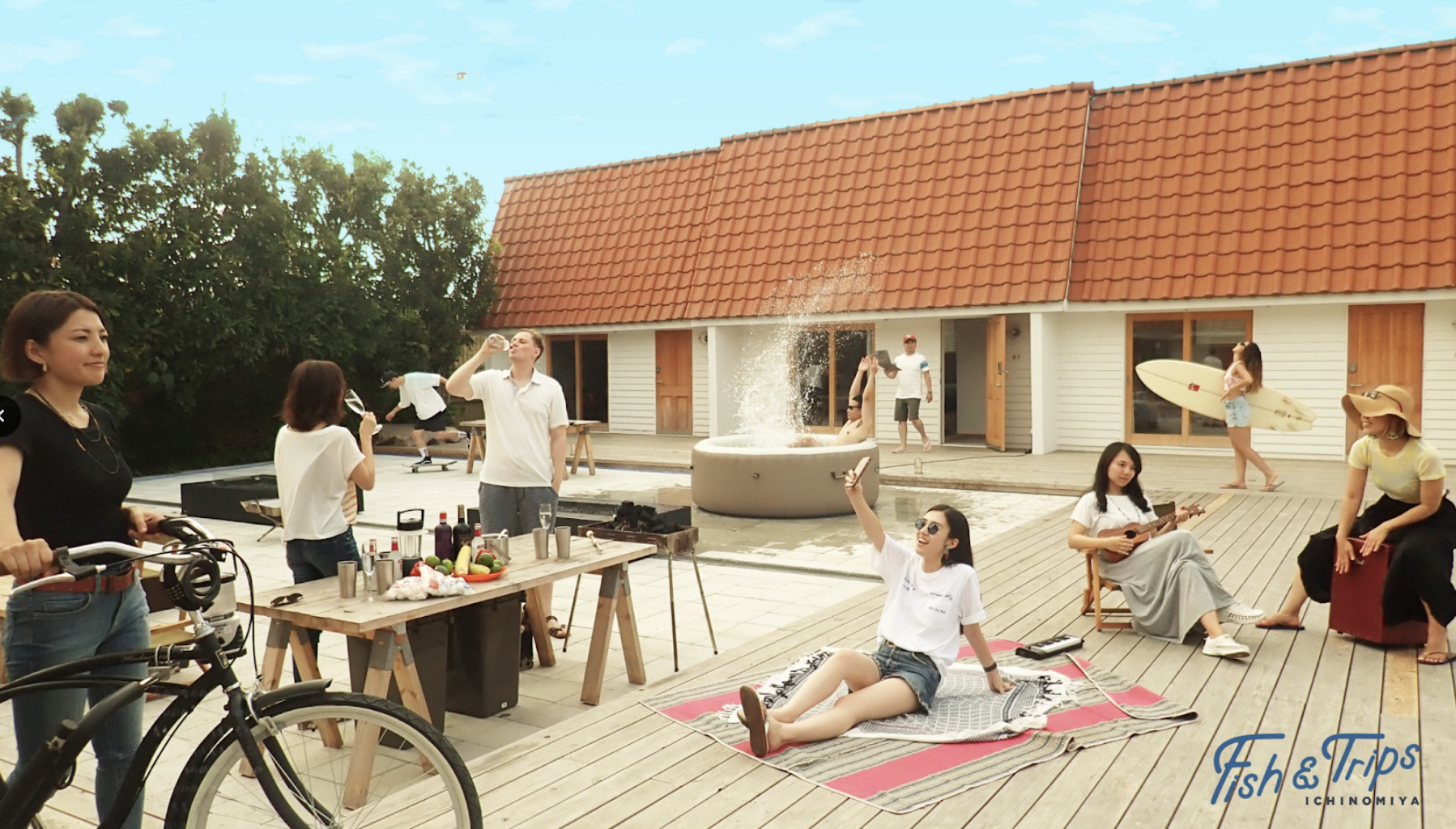
Lastly, there was a project where we were asked to put on a fireworks show using a large quantity of fireworks, which were purchased in advance from a fireworks wholesaler in Tokyo. Ultimately, the off-site involved prior preparation that was much more elaborate and well-planned than I had imagined.
–Your first time off-site sounds like it was fun. What other off site experiences have you had while on temporary assignment to Anchorstar?
Well, it isn’t always just fun and games. We once spent an entire day on the 49th floor of Roppongi Hills, a conference room with a beautiful view called Academy Hills, to have a serious discussion regarding Anchorstar’s business plan. In addition to off-site trips, including the overnight stay I mentioned earlier, we have also had many “off-site meetings,” where we challenge ourselves to engage intensively in conversation at a location separate from the usual office.
–After returning to Mori Building, I heard that you used your experience at Anchorstar to organize your very own off-site visit. What made you decide to organize an off-site with Mori Building?
The main reason was that there were a number of new members who joined the department during the COVID-19 pandemic, including myself. There were just under 40 members when I returned to the department. About ten of them were new recruits or new colleagues who had joined through internal transfers.
Many members in the same department had only communicated with each other online, and some had never even spoken to each other outside of work. When I learned of this fact, I felt a strong desire to do something to change this situation.
–A fairly large number of people in your department were going to take part in this off-site event, many for the first time. Was it difficult to set up?
When I first proposed doing an off-site meeting, I had already decided that the objective would be team building (to help members get along with each other and work better together), but I hadn’t decided on the content of the off-site meeting at all.
Once the off-site event had been confirmed, the schedule was finalized. There’s no such thing as a day when everyone in the department is guaranteed to be free, so I arranged the dates well in advance.
Next, I considered where to hold the off-site meeting. I looked for a location that would put some distance between ourselves and the office. I figured if it was not a little far away, there would be people who might say, “I’m going to be late” or “I’m going to step out for a bit.” Additionally, I was looking for an environment that would feel unusual or special. Through a stroke of luck, I was able to rent a nice studio space in Tennozu, which ended up being the ideal location for our off-site.
–Even before deciding on the content of the off-site, it’s important to have a ‘let’s just do it!’ kind of attitude. However, I also want to know about the contents of the off-site.
Although I’d decided to make team building the objective of the off-site, it was difficult to determine how I’d execute the goal of bringing the team together. After a lot of discussion, and the help of Anchorstar staff members, I decided to make the theme of the off-site ‘Imagination’. I chose this theme because there is lots of ‘planning’ and ‘creating’ new things in my department, but I wanted everyone to use more of their imagination.
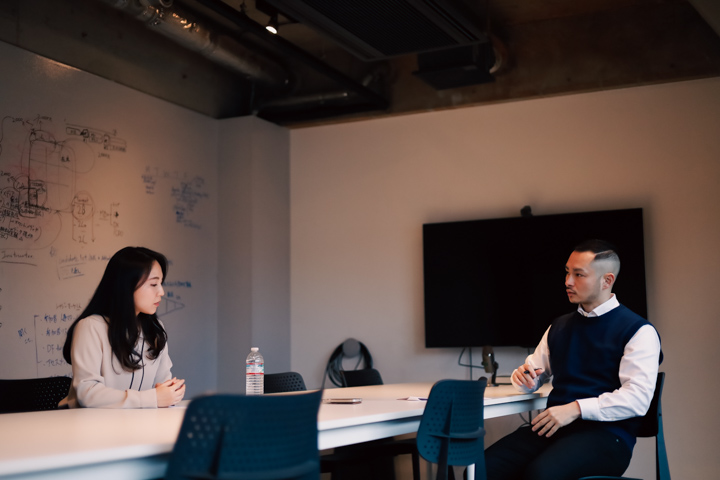
Rather than developing each person’s imagination, I was more interested in answering the question, “What is imagination?” and “How do we use our imagination?” I wanted to create an environment where everyone could experience and discuss these topics together. Ultimately, I designed a game where everyone was encouraged to actively use their imagination.
–A game that uses your imagination, that sounds interesting! What kind of game did you design, specifically?
It was a guessing game using shapes, and I called it ‘The Shape Transfer Game.” In this game everyone is put into pairs, with one person looking at a complex shape and explaining it using only words, while the other person receiving the explanation tries to draw the same shape on a piece of paper. The rules of the game were as follows:
< Rules >
① One team member will be “the explainer,” and only they can see the shape printed on the paper.
② Then, using only words, the explainer describes the shape to their team members as accurately as possible. .
③ The team members then draw a shape on a piece of paper based on the description given by the explainer.
< Notes >
– In total, the team will have ten minutes to both listen to the explanation and draw the figure
– The explainer should have their back turned to the team members, so that they cannot see the team member’s reactions
– The listening team members cannot speak for the duration of the activity
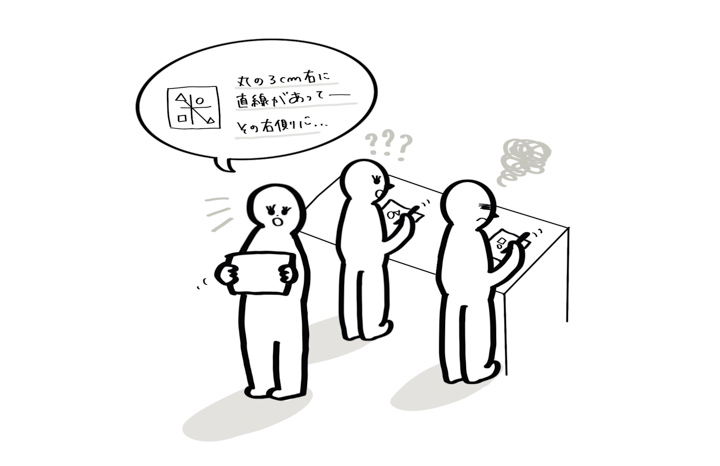
This game was actually quite difficult. I chose figures that might be difficult to explain in order to emphasize the necessity of good communication. The explainers try to explain the shape in easy-to-understand language for their listening team members, but every person has a unique way of expressing themselves. For example, “X cm to the right of the top left corner of the paper,” or “the width of three fingers”, or “about half the length of the ballpoint pen I’m holding.” It was really interesting to hear how differently a shape could be described based on who was speaking.
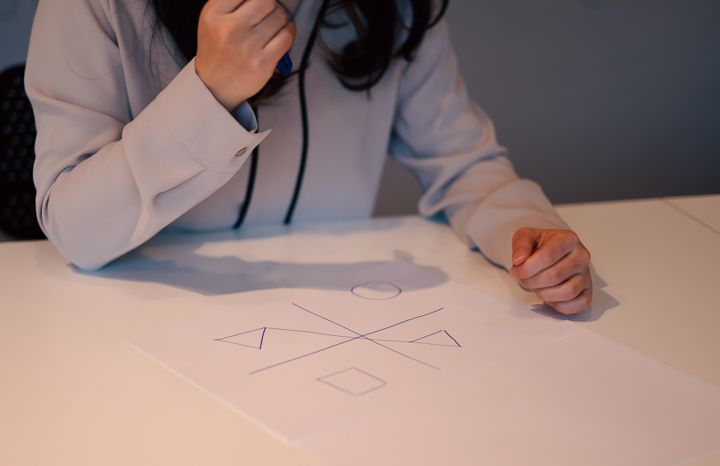
—-It seems pretty difficult to describe these shapes. While conducting the game, was there anything you were able to improve?
After each game, I included a lot of time for active communication. I explained the goals of the game and what we hoped team members would learn from playing it. Additionally, I made sure there was time for the teams to create and discuss strategies.
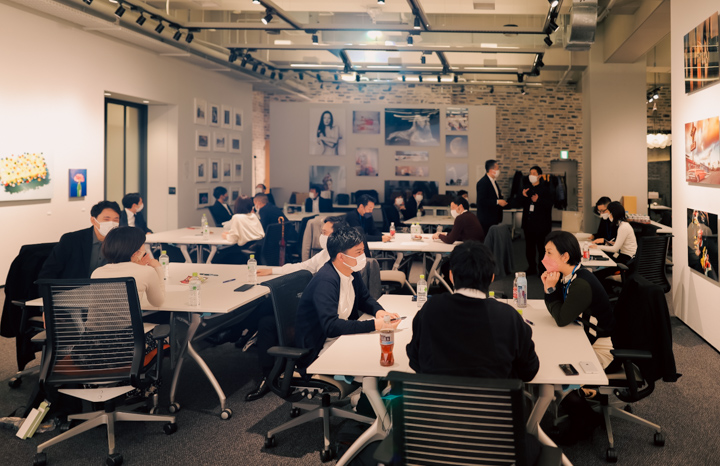
While they developed strategies, I was impressed to see how shared language and knowledge was used by each team. For example, a team made of several science students used ‘coordinates’ as a way to improve communication. Using coordinates, they were able to align spatial perceptions, so that everyone could visualize the explanations. Other teams folded paper in small pieces and used the number of folds as a form of common language.
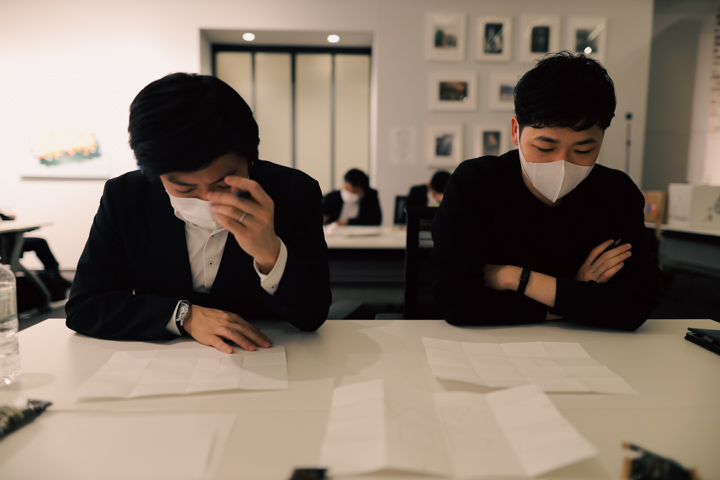
At first it was difficult to explain the shapes, but through developing common language, perceptions within the team became more closely aligned and communication became easier. It was good to be able to watch others experience that feeling.
–What is the atmosphere like in the room? Did it seem like people were having fun?
I decided to run the shape transfer game three separate times with different participants over the course of two hours, and each time it seemed like people were having a lot of fun.
People really enjoyed that it was an activity that played with multiple dimensions. Both the person explaining the diagrams and the person drawing them had to use their imagination to accomplish the tasks at hand. While strategizing, team members needed to show leadership to facilitate discussions as well as flexibility to try a variety of methods.
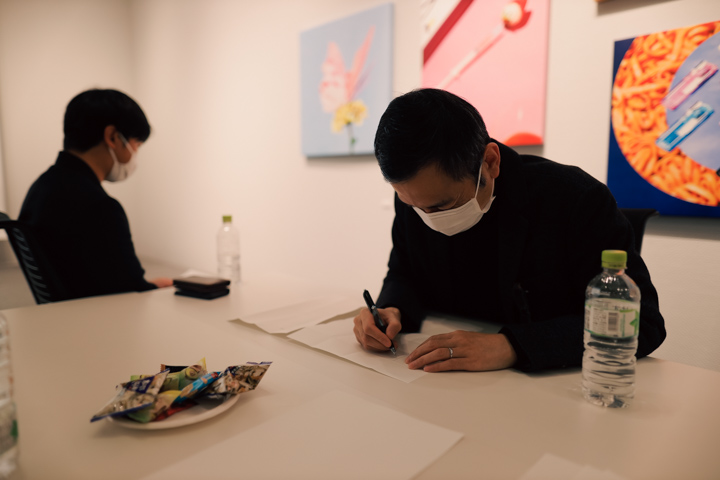
–Aside from the shapes game, what were some of the difficulties you faced while preparing for the off-site?
Creating the schedule was the most difficult part. I had to make sure everyone was available from 12:00 to 18:00, including travel.
It’s hard to know how much time an activity will take or what problems may arise until you do it.
I think I rearranged the daily schedule at least ten times. I considered things like, “Do we need to include a break here?” or “If we want to go on a walk in Tennozu, do we need time for a 20-minute break?” or “No, it’s too long, two hours of games would be tiring”. A considerable amount of imagination was necessary to prepare for many possible scenarios that might take place during the off-site.
Since this was my first time planning an off-site, I was most concerned that people wouldn’t have a good time or be bored by the activities.
–It must be scary not knowing if things will go according to plan. What did you do to avoid being thrown off in the moment?
From the preparation stage, I actively involved the department heads to make sure they were actively supportive of the offsite. It was really significant to have the full support of the head of the department. They told everyone in the department, “We’re going to do this kind of project, so join us!” The section manager heard this and fully supported the project as well. That was very encouraging.
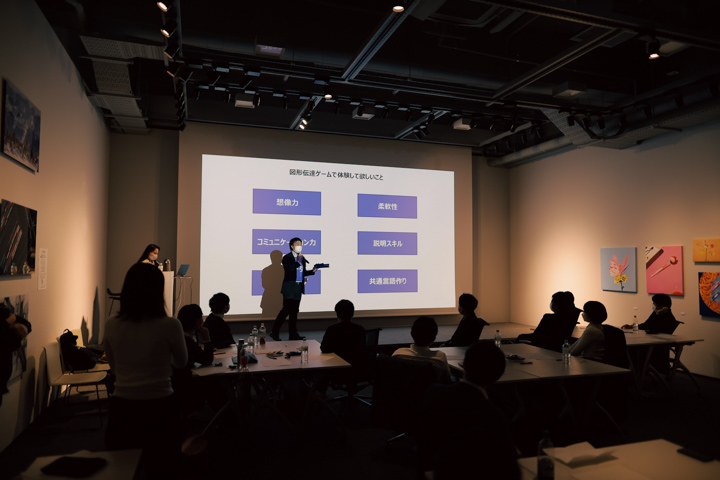
I also considered how to create a lively atmosphere during the off-site. I rented a very nice venue, bought some interesting sweets, and prepared a wine I particularly enjoy as a prize for the games. I also arranged a get-together after the off-site at a trendy restaurant nearby.
–It’s important to involve key people and make sure everyone is having fun. After this off-site event, is there anything you would like to make the most of next time?
Next time, in addition to department heads and section managers, I would like to recruit collaborators in advance to help with the planning process. To call them cherry-pickers would be a misnomer, but by collaborating with people who are planning professionals, I may be able to make the day of the event more exciting for the participants. It would also be a good experience for these collaborators to assist in planning the off-site.
–After successfully completing this off-site event, what were some of the challenges you faced and how much did they impact you?
I mean, it really attracts attention. To say, “We’re going to do an off-site event!” then be in charge of planning and producing various things. Some people might view my actions as self-important, so it was a little scary. I was nervous that I wouldn’t have the courage to do it all.
–Now that you’ve done it once, are you less afraid?
At first, I was overly concerned about whether everyone was laughing, having fun, or indifferent during the off-site. Since I had transferred during the COVID-19 pandemic, it was my first time seeing everyone in my department in one place and in-person. So, it was hard to try and anticipate what their participation would look like.
But when I finally plucked up the courage to do it, I was somewhat blown away. Everyone was very excited and I was able to enjoy myself thoroughly.
–Your off-site project has set a precedent to work this new way! I hope it will be a catalyst for change. Perhaps you’ve created an atmosphere that encourages more people to take the initiative.
Yes, we received a lot of positive feedback from within the company.
I heard things like, “It was good to have a common experience,” and “I became friends with people I had never talked to before, which made my job easier. I hope we can expand horizontally to other departments, and this may have been a big step in that direction. I am really glad that we tried the off-site program.
–For the last question I’d like to ask, what does an ‘off-site’ mean to you?
There are many benefits of having an off-site, but for me, it mostly comes down to team building.
When I was first transferred to Anchorstar, I felt like I didn’t really fit in. However, the off-site helped me get to know my team better and created a circumstance for me to take “the first step toward a relationship where [I could] talk about anything” with the Anchorstar team. I believe that is one of the most appealing aspects of an offsite. The more comfortable you are speaking to your coworkers, the more enjoyable your workplace will be.
–After reading this article, it’d be great if more companies decide to take up the challenge of going on an off-site. Thank you for your time, Rina!
I agree! I hope people decide to challenge themselves and their teams. However, I will say that the planning and preparation process was so intense that I dreamed about the off-site event during my New Year’s vacation!
